Introduction
More than merely a decorative custom, mehandi—also known as henna—is a legacy passed down through decades. Mehandi design has developed as an expressive art form honoring beauty, culture, and individuality from ancient rituals to contemporary bridal glam. This book will walk you through every aspect—step-by-step—regardless of your search for complex mehandi ka design, classic wedding mehandi design, or investigating the therapeutic advantages of henna.
A Glimpse into History: Henna Use in the Past

mehandi ka design has been used for about five millennia. Ancient Egypt’s archeological records reveal that henna was applied to fingers and hair for both ceremonial and aesthetic needs. It was reported that Cleopatra herself followed a beautification regimen included henna application to her body. From the Vedic era, henna has been used in India for not just ceremonial purposes but also for luck-bringing, evil-preventing, bodily cooling in blistering heat.
mehandi ka design has stayed a sign of celebration, happiness, and transformation over the Middle East, North Africa, and the Indian subcontinent.
Step-by-Step Guide to Applying Mehandi wedding mehandi design

Whether you want to hone your talents or are a novice, here’s how to use mehandi for gorgeous, long-lasting effects.
1. Prepare the Henna Paste

Either make fresh paste right at home or purchase premade cones. Regarding do-it-own projects:
components:
Natural henna powder, sieved
Lemon Juice
Honey
Essential oils with tea tree or eucalyptus
instructions:
Making a thick paste, mix henna powder with lemon juice.
To accentuate color and texture, toss in a spoonful of sugar and some drops of essential oil.
Plastic wrap covers the bowl; let it rest for six to twelve hours (better still overnight).
2. Fill the Cone
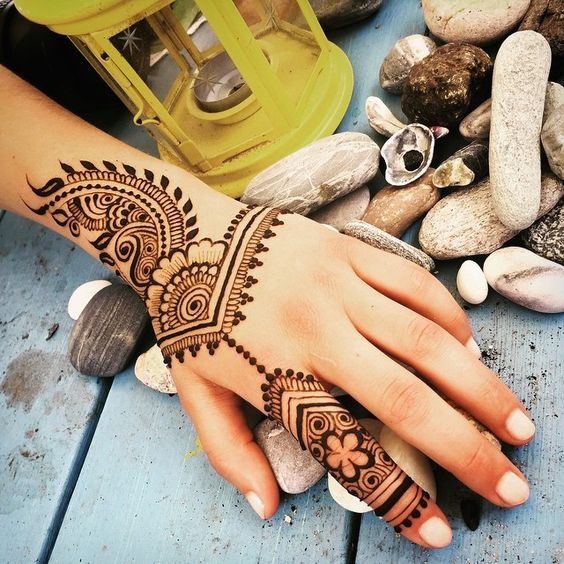
Fill a plastic sheet or pre-rolled cone with paste, then tape or rubber band-sealed the rear. Make sure inside there is no air trapped.
3. Prepare the Skin
To get any oils or lotions off the skin, wash it with soap and water. To guarantee improved stain absorption, gently exfoliate the region.
4. Application Time
The creative component comes now. Mehandi design photo references or let your imagination lead you. Move inward starting with the fingertips. Typical designs include:
1. Arabic mehandi designs: floral motifs in bold, flowing lines.
2. Indian bridal mehandi: Dense, complex wedding mehandi design with mandalas, paisleys, and personal motifs from India.
3. Minimalist mehandi: Modern designs ideal for casual events are minimalistic.
5. Let It Dry Naturally
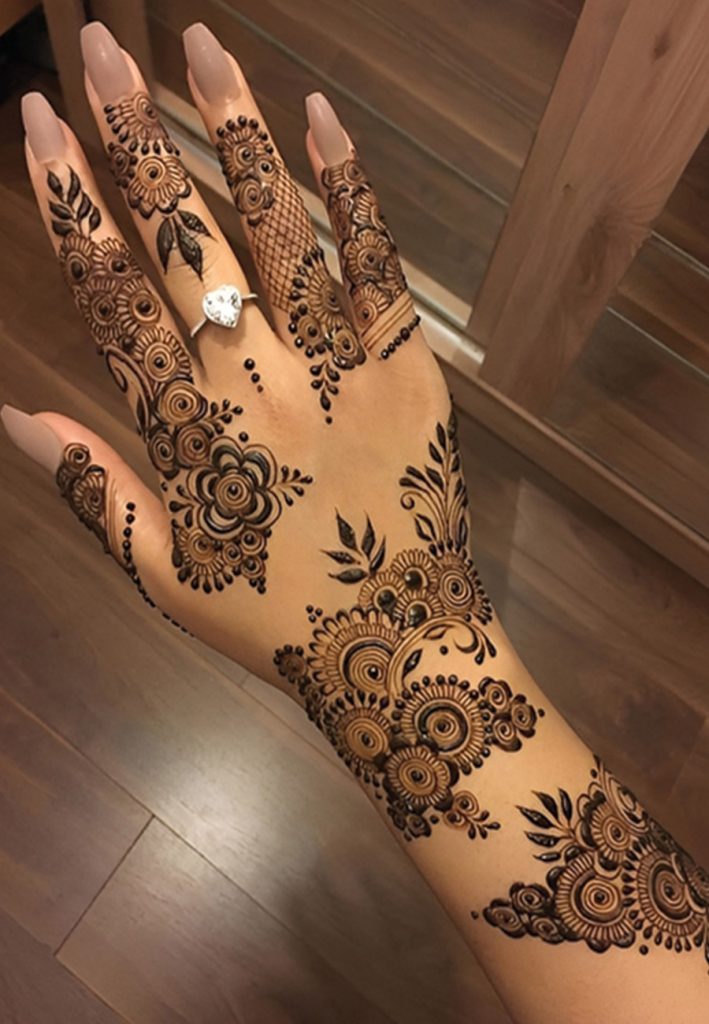
Steer clear of the fan and dryer. Apply with a cotton ball a mixture of lemon juice and sugar on top once dry. This enhances the stain’s depth.
6.Peel and Reveal
Never wash the dry paste off with water; gently scrape off it after six to eight hours (or overnight). For a rich, black stain, avoid coming into touch with water for at least twelve hours.
Advice from experts in Mehndi Artists

Professional mehndi artists have developed their trade over years; they often offer pearls of knowledge to improve your mehandi performance.
1. Cone Quality Matters
For complex designs, always use a cone with a fine point. A nice cone lets one manage flow and glides naturally.
2. Practice on Paper First
Sketch it out on paper or use a practice hand first before trying intricate mehandi ka design on your hand. This enhances symmetry and clarity.
3.Layer Your Design

Add details progressively starting with the major idea. This method enables you control design’s balance and prevents smearing.
4.Know the Skin Type
Henna absorbs better from dry skin; oily skin may resist coloration. Before application, correctly clean and dry the region.
5. Aftercare is Key
After paste removal, professional artists advise using balm, ghee, or clove steam to improve stain lifetime.
Wedding Mehandi Design: The Crown Jewel of Bridal Beauty
The design of the wedding mehandi is symbolic and emotive rather than only decorative in Indian and South Asian bridal customs. Usually done on the “Mehndi night,” it usually comprises:
Groom’s initials hidden in the pattern.
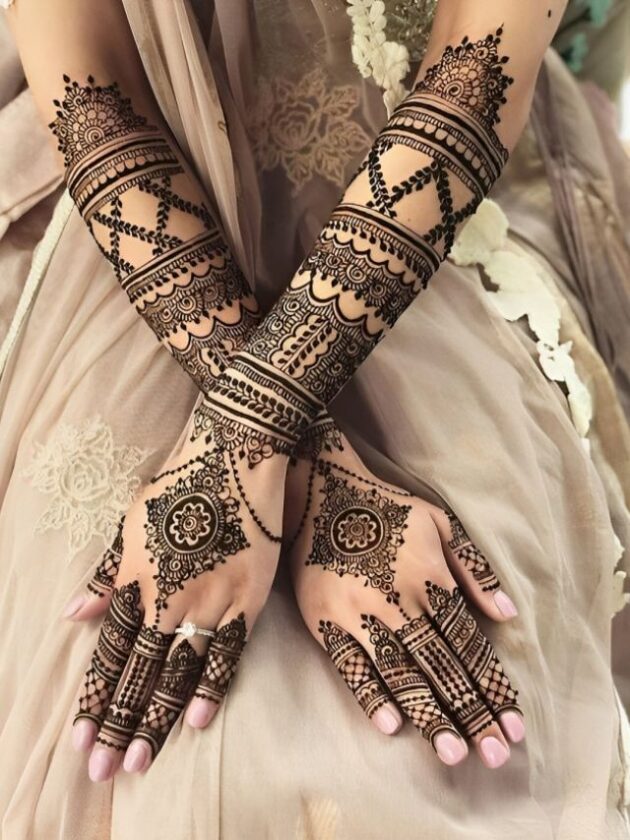
Symbols include doli (marriage procession), lotus flowers (purity), and peacocks (love).
Complete arm and foot coverage using exact geometrical mehandi ka design.

Usually highlights of pre-wedding celebrations, bridal mehandi ka design takes hours to apply. Today’s brides choose fusion designs that combine Arabic or Moroccan or traditional Indian elements, therefore producing distinctive skin narrative.
Try your hand at henna body painting today outside the hands!
Not just for palms and feet is henning used. Modern aficionados are bringing henna into the body painting scene as a lighthearted, temporary tattoo substitute.
Popular venues include:
Area corresponding to the shoulder or the collarbone
wrists and ankles
neck back of the neck
Waistsline
Especially during holidays, concerts, or vacations, henning body art is a great approach to exhibit creativity and can last one to two weeks. Most people are safe as it’s quite natural; except from those who are sensitive to natural dyes or essential oils.
Beauty Benefits of Henna for Hair
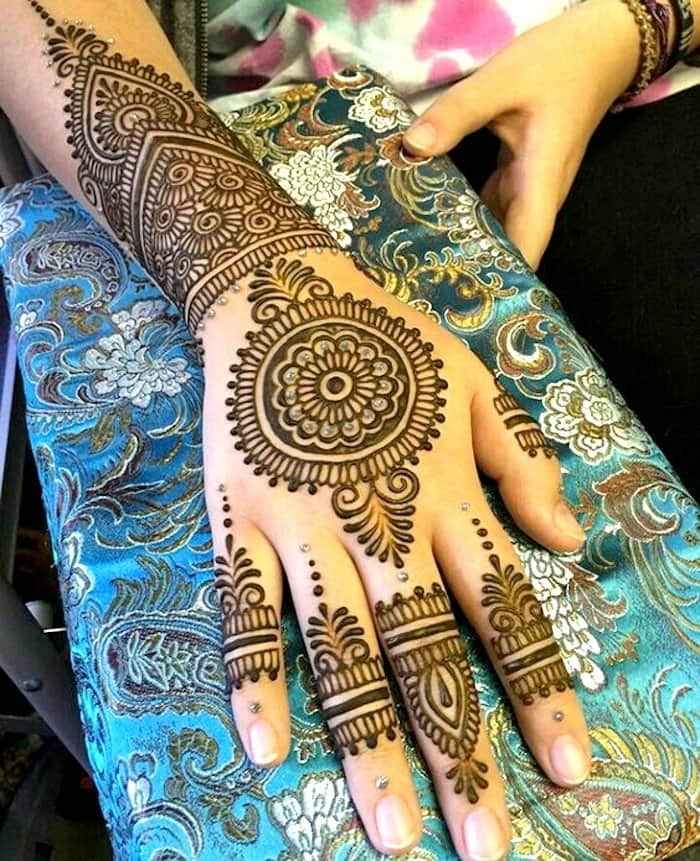
Not only a decoration tool, henning is a time-tested natural hair care and nourishing solution.
Strengthens and Conditions
Strong and shiny, henning covers the hair shaft. It can aid with split ends and lowers breaking.
Natural Hair Color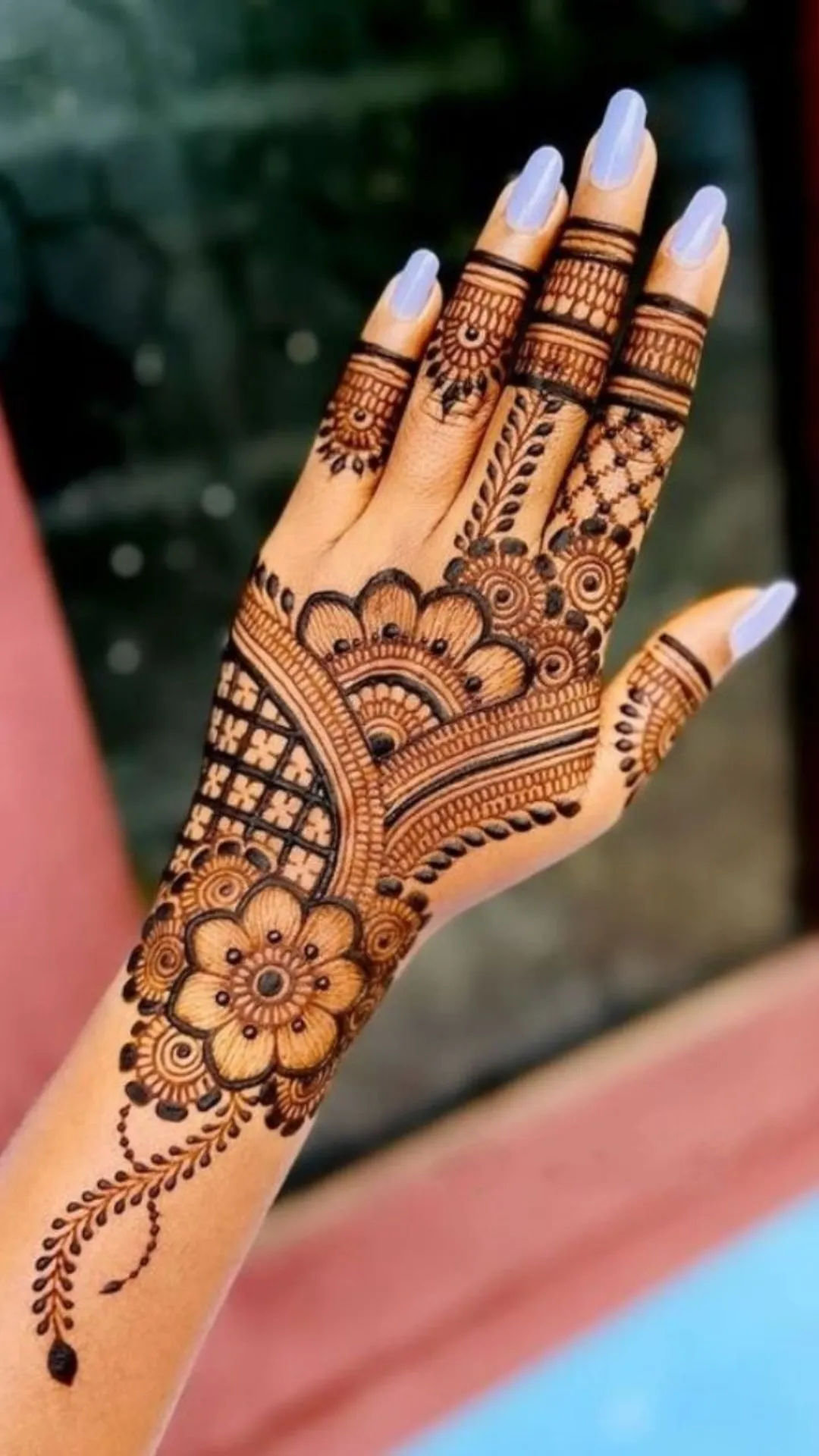
Henna colors the hair a beautiful reddish-brown shade. Combined with indigo or amla, it can provide subdued colors free from strong chemicals.
Controls Dandruff and Itching
Its antimicrobial and cold qualities make it perfect for preserving a good pH balance and treating scalp problems.
Promotes Hair Growth
Henna’s ingredients feed the scalp, boost circulation, and promote normal hair development.
Apply henna powder along with yogurt, tea decoction, or water. Let it rest for several hours before treating the hair and scalp. For softly naturally colored hair, rinse off two to three hours.
Mehandi Design Pic Inspiration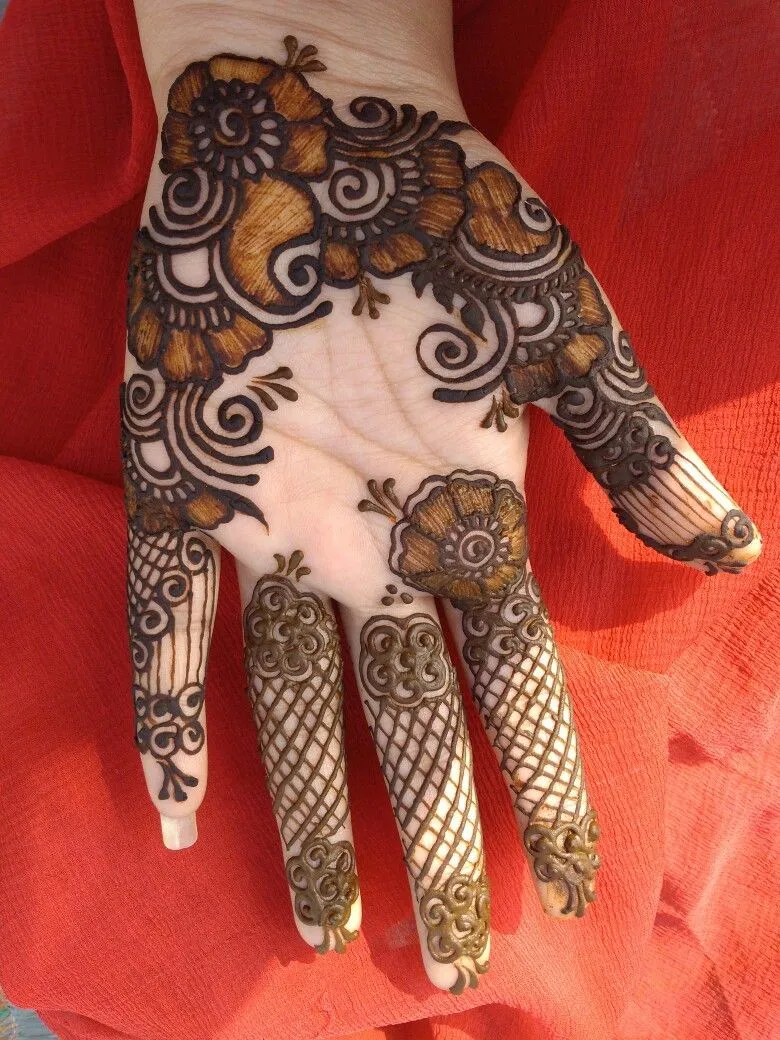
Mastery of fresh patterns requires visual references. Search for mehandi design ideas online or in publications with an eye toward:
Detailing and line thickness
Balance between vacant and occupied areas
Finger and wrist continuity
Cultural elements like mandalas, jhumkas, or kalash

To further your own original mehandi style, you might even make a mood board including your preferred designs.
From “mehandi design pic: The Art of Henna Body Painting,” excerpt
Here’s a little passage from the esteemed novel “mehandi design pic: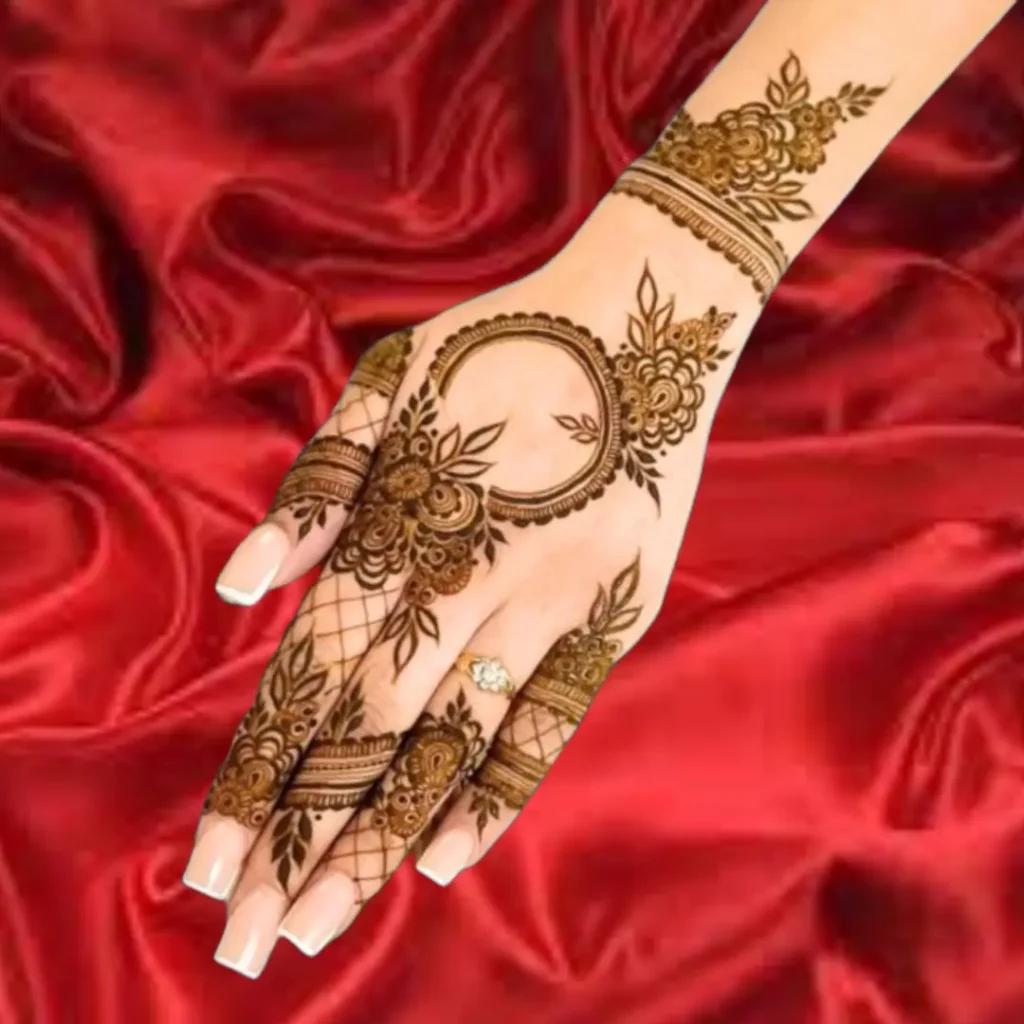
The Art of Henna Body Painting” brilliantly catches the emotional core of henna:
mehandi design pic is not only adornment. It is a language, not a dialect. A scented ink on the skin, indicative of happiness, metamorphosis, and holy change. It chronicles celebrations, the most delicate events of life, and the ageless link between art and ritual.
Conclusion
Henna is still a live practice whether your interests are in mehandi ka design for celebrations, fascinated by complex wedding mehandi design, or investigating its healing properties for hair and body. Its earthy, magical stain links civilizations, continents, and generations across the past with the present.
Therefore, the next time you come across a mehandi design picture, understand that it is more than simply a beautiful pattern; it is a piece of history, a statement of self, and an artistic medium unto itself.

